#Kostolac
Text
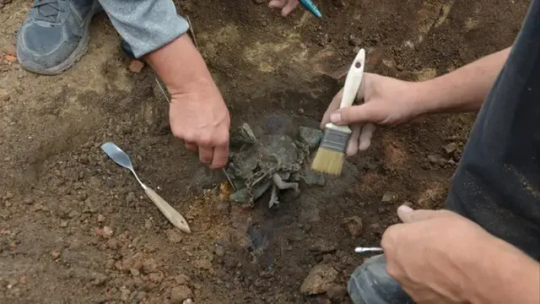
'Magical' Roman Wind Chime with Phallus Found in Serbia
Phallic objects like this were common in the Roman world to ward off evil.
Archaeologists have unearthed a Roman wind chime called a tintinnabulum — featuring a prominent phallus — at an archaeological site in eastern Serbia.
Such objects, which were hung near the doorways of houses and shops, were believed to serve as magical protection for the premises. This one was discovered on the porch of a large home on a main street in Viminacium, an ancient Roman city, the extensive ruins of which now lie near the Serbian town of Kostolac, about 30 miles (50 kilometers) east of Belgrade.
"The building was destroyed in a fire, during which the porch collapsed and fell to the ground," Ilija Danković, an archaeologist at the Institute of Archaeology in Belgrade, told the Serbian-language website Sve o arheologiji.
Tintinnabulums were designed to catch the wind, supposedly so their noise and unusual appearance would frighten off evil spirits and ward off the curse of the evil eye, which was greatly feared in antiquity.
Viminacium was the civil and military capital of Rome's Upper Moesia province from the first to fifth centuries, until it was sacked by the Huns under Attila in 441. The city was rebuilt under the Byzantine emperor Justinian, but it was finally destroyed by invading Slavs in about 535.
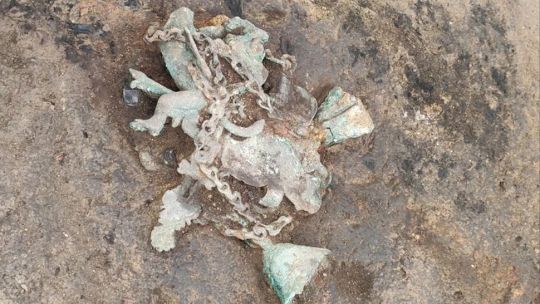
Magical phallus
This is the second tintinnabulum found in the ruins. The first is now in a private collection in Austria; nothing is known about its discovery, he said.
However, the newly discovered tintinnabulum was discovered in its full archaeological context. "As soon as we started uncovering it, we knew immediately what we had discovered," he said.
The latest tintinnabulum from Viminacium is made of bronze, but it is being kept surrounded by soil until it can be properly restored. As a result, its exact configuration isn't known. But it is centered on a "fascinum" — a portrayal of a magical phallus — with two legs, wings and a tail, he said.
"Judging by what can be seen … it had four bells and the chain from which it hung," Danković said, adding that there also seemed to be other elements to the design not seen on other tintinnabulums.
Roman beliefs
The symbol of a phallus wasn't always erotic or obscene for the ancient Romans, Danković said. "It was a bringer of good fortune and happiness, and an efficient weapon to combat the evil eye," he said. "For this reason, phalluses can be seen everywhere in the Roman world, from wine cups to the amulets worn by children."
He added that the symbol was often publicly displayed to summon prosperity and deter thieves.


The discovery of the tintinnabulum is evidence that Viminacium was "in every sense a part of the Roman world," Danković said.
Not only did its people share many Roman beliefs, he said, but it's likely that the tintinnabulum was imported from elsewhere in the empire, showing that there were social elites at Viminacium who were willing to pay a significant amount of money for such an object.
Ken Dark, an archaeologist and historian at King's College London who wasn't involved in the discovery, said the Viminacium tintinnabulum was a type of "apotropaic" amulet that was designed to ward off evil influences and give protection to people or their property.
Such amulets "were common in the Roman world, and these sometimes took forms which would seem very strange — or even comical — to us today," he told in an email.
By Tom Metcalfe.

#'Magical' Roman Wind Chime with Phallus Found in Serbia#tintinnabulum#phallus#bronze#ancient artifacts#archeology#archeolgst#history#history news#ancient history#ancient culture#ancient civilizations#roman history#roman empire#roman art
99 notes
·
View notes
Text
Serbia’s Higher Prosecution Office has been shaken again, this time by accusations about forged statements. Zeljka Nikolaidis, a prosecutor for organised crime in the Higher Public Prosecution, confirmed to BIRN that her alleged statement used in a disciplinary complaint against her superior, Nenad Stefanovic, and his deputy, Brankica Maric, was forged.
The statement was submitted without her signature, with the Prosecution Office facsimile misused without her knowledge during her vacation, she said.
Her alleged statement, which she called “80 per cent inaccurate”, was used in favour of Stefanovic and Maric in a disciplinary case initiated by two other prosecutors who were previously moved from their posts against their will while leading a corruption case involving a company linked to the ruling party.
The disciplinary case against Stefanovic and Maric, who were previously accused of favouring the ruling party, was dismissed.
“I cannot say who did it but my logic says that it was probably those who had an interest to do that. The disciplinary case was against Stefanovic and Maric. My statement likely influenced that case against them being dropped,” Nikolaidis told BIRN. She added that she will ask for the removal of her statement.
“This is a serious criminal offence and the Prosecution for Organised Crime needs to react,” she said.
Nikolaidis resigned a month ago as chief of the Special Department for the fight against corruption in the Public Prosecutors Office but has remained to work as a prosecutor.
The stir in the Higher Public Prosecutor’s Office started in February when two prosecutors – Bojana Savovic and Jasmina Paunovic – who had worked on a corruption case in EPS, the state-owned electric power company, were transferred to other positions.
Their removal came after the police arrested six people suspected of having lost EPS $7.5 million during the performance of works at the thermal power plant Kostolac B. Some of the suspects were employees of a company long linked with the ruling Serbian Progressive Party.
Prosecutor Stefanovic and his associate Maric denied a political motivation for the removals but giving several conflicting explanations about the reasons for transferring the prosecutors in the middle of an operation to arrest the suspects.
The Association of Prosecutors of Serbia has backed Savovic and Petrovic, while a protest was held in Belgrade in their support with calls for the independence of judiciary.
2 notes
·
View notes
Text
Miskolci Régész Enciklopédia - Inkrusztáció
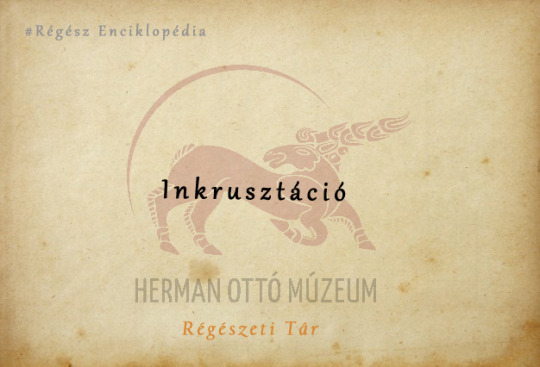
Az inkrusztáció eredetileg egy iparművészeti eljárást jelöl, a Magyar etimológiai szótár szerint ‘nemes anyagokból készült berakásos díszítés bútoron’; ‘márvány vagy színes kő berakás’. A régészetben azonban az agyagból készült edények felületére, azok karcolt vagy mélyített díszítéseibe töltött betétek elnevezéseként használjuk. Ezek a betétek a kerámiákétól elütő színben készültek.
Az eljárást főként őskori kerámiakészítők és fazekasok használták, feltűnik neolitikus, rézkori és bronzkori agyagedényeken is. A két legismertebb Kárpát-medencei kultúra, melyek edényein megtaláljuk, a neolitikus bükki kultúra (Kr. e. 5200–5000/4900) és a középső bronzkori mészbetétes edények népének kultúrája (Kr. e. 2000–1500). Mindkettő magas szinten űzte a kerámiaművességet.
A bükki edények bekarcolt vonaldíszeibe a sötét felülettől elütő fehér, sárga vagy vörös színű betétet tettek (1–2. kép), melyet a természettudományos vizsgálatok szerint ásványi anyagokkal (kaolinittel, goethittel, hematittal) színezett, vagy a természetben ilyen állapotban előforduló agyaggal töltöttek ki. Néhány darabnál porrá tört márga (agyagos-karbonátos kőzet) valószínű használatát mutatták ki. A betéteket utóégetéssel vagy szerves ragasztóanyagok segítségével rögzíthették a kerámiák felületébe.

1.kép: Inkrusztált edények a neolitikus bükki kultúrából (fotó: Baranczó Benedek)
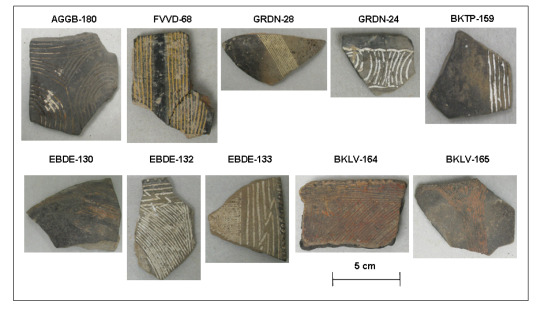
2.kép: Fehér, vörös és sárga inkrusztációk bükki edénytöredékeken (Mihály J. és munkatársai 2010, 1. ábra)
Ezzel szemben a középső bronzkori mészbetétes edényeknél csak fehér színű inkrusztációt használtak a fazekasok (3. kép), melyet főként porrá tört állati csontokból készítettek.

3.kép: A bronzkori mészbetétes edények kultúrájának inkrusztált kerámiái (Kreiter A. és munkatársai 2020, 2. ábra)
Az inkrusztált díszítés előfordul még a rézkori tiszapolgári kultúrában, valamint a kora bronzkori Makó-, Nyírség- és Kisapostag-kultúrákban is, illetve kis számban a középső bronzkori Vatya-kultúrában. A rézkorban és bronzkorban a fehér inkrusztáció készítése a Közép- és Al-Duna-vidék más kultúráinál is jellemző volt (Kostolac-, Vučedol-, Szeremle-, Gârla Mare-, stb.).
A rézkori tiszapolgári edények fehér inkrusztációját a természettudományos vizsgálatok alapján porított állatcsontból készítették, míg a Kostolac-kultúrában többnyire kalcit, a Vučedol-kultúrában pedig kagylóhéj lehetett az alapanyag. Az, hogy milyen anyagokat használtak fel az inkrusztáció elkészítéséhez tehát kultúránként különböző volt, és azt az elemzések szerint sokkal jobban befolyásolták a hagyományok, mint a közelben elérhető nyersanyagok köre. A bronzkori kultúráknál több esetben kimutatták zúzott kvarc szándékos hozzáadását is a fehér inkrusztáció anyagához, vagyis a mészbetétet nem egyféle anyagból készítették. Az is kimutatható, hogy ha több „hozzávalót” használtak, azokat vagy együttesen porították, vagy külön-külön törték/őrölték meg, és később keverték össze. Ha hasonló keménységű anyagokat használtak, azokat együtt porították, míg a különböző keménységűeket külön-külön, és csak később keverték össze azokat – vagyis a választásnak praktikus okai lehettek. A „hozzávalók” fajtái a bronzkori mészbetét fehér színét, matt vagy fényes voltát is befolyásolták.
A díszítéshez használt szerszámok is kultúránként különböztek a bronzkorban (W-, T-, U-alakú végződéssel), mint ahogy a mészbetétágy elkészítésének technikája is (bemélyítés, beböködés, pecsételés, folyamatos bekarcolás). A mészbetét alapanyagai általában nem mutatják magasabb hőmérséklet hatására történő átalakulás nyomait, így többnyire égetés után vihették fel azokat a kerámiák felületére. A betét rögzítésére főként szerves kötőanyagot használhattak (tojásfehérje, enyv, növényi gyanta), mely az idők során lebomlott, így nehezen kimutatható. A Vatya-kultúrából származó néhány kerámiánál a mészbetétágy keresztmetszetének pásztázó elektronmikrószkopos vizsgálata azt mutatta, hogy a bemélyített díszítésbe először híg agyagot kentek, az inkrusztációt pedig ezt követően helyezték bele, egyes esetekben pedig magát a betétet hevítették a behelyezés előtt. Ezeknek a praktikáknak a célja is a jobb rögzítés lehetett.
Az eddigi vizsgálatok szerint egyes bronzkori kultúráknál szigorúan ragaszkodtak a kulturális szabályokhoz, míg máshol kísérleteztek a különböző alapanyagokkal és inkrusztációs technikákkal, többféle megoldást is használtak. Mindenesetre úgy tűnik, hogy rézkori és bronzkori kerámiakészítők más alapanyagokat és rögzítési technikákat alkalmaztak, mint neolitikus „elődeik”.
Csengeri Piroska
Ismeretterjesztő a témához:
Kreiter A. és munkatársai: Miből készült a középső bronzkori kerámiák „mészbetét” díszítése? 2020.06.08. https://mnm.hu/hu/cikk/mibol-keszult-kozepso-bronzkori-keramiak-meszbetet-diszitese
Szakirodalmak a témához:
Czekaj-Zastawny, A. et al.: Colorants used to decorate the Bükk culture vessels. In: Valde-Nowak P., Sobczyk K., Nowak M., Źrałka J. (szerk.): Multas per gentes et multa per saecula. Amici magistro et collegae suo Ioanni Christopho Kozłowski dedicant. Jagiellonian University Kraków, 2018, 351–359.
Kiss V.: Middle Bronze Age Encrusted Pottery in Western Hungary. Varia Archaeologica Hungarica XXVII, Archaeolingua, Budapest, 2012.
Mihalik J.: A boldogkőváraljai neolithkori telepek. Archaeologiai Közlemények XX, 1897, 5–39.
Mihály J. és munkatársai: A bükki kerámia inkrusztált díszítéseinek vizsgálata mikroanalitikai módszerekkel. Archeometriai Műhely VII/4 (2010), 249–257.
Parkinson, W. A. et al.: Elemental analysis of ceramic incrustation indicates long-term cultural continuity in the prehistoric Carpathian basin. Archaeology Ethnology & Anthropology of Eurasia 38/2 (2010), 64–70.
Roberts, S. et al.: Characterization and textural analysis of Middle Bronze Age Transdanubian inlaid wares of the Encrusted Pottery Culture, Hungary: A preliminary study. Journal of Archaeological Science 35 (2008), 322–330.
Sofaer, J. – Roberts, S.: Technical innovation and practice in the Eneolithic and Bronze Age encrusted ceramics in the Carpathian basin, Middle and Lower Danube. Archäologisches Korrespondenzblatt 46 (2016), 479–496.
Wosinsky M.: Az őskor mészbetétes diszű agyagművessége. Budapest, 1904.
#hermanottómúzeum#miskolcimúzeum#homregeszet#miskolc#múzeum#muzeum#magyarrégészet#régészet#regeszet#csengeripiroska#kerámia#díszítés#ceramic#pottery#fazekasság#kézművesség#szócikk#régészenciklopédia
19 notes
·
View notes
Text
Arco de triunfo romano desenterrado en Serbia
Desafiando el frío y el viento, los arqueólogos en Serbia inspeccionaron el sitio de un antiguo arco de triunfo romano, uno de los pocos en los Balcanes, que data del siglo III.
El arco de triunfo fue descubierto en diciembre en el sitio de Viminacium, una ciudad romana cerca de la ciudad de Kostolac, a 70 kilómetros (45 millas) al este de Belgrado.
Miomir Korac, el destacado arqueólogo, dijo…

View On WordPress
#Antigüedad#Caracalla#Imperio Romano#Marco Aurelio Antonino "Caracalla"#Serbia#Siglo I dC#Siglo II dC#Siglo III dC#Siglo IV dC#Viminacium (Serbia)
0 notes
Text
ORDO DECURIONUM A VIMINACIUM Brant R. De Beer
ORDO DECURIONUM A VIMINACIUM Brant R. De Beer (Instituut vir AZANINI-studies, Suid-Afrikaanse Akademie vir Wetenskappe en Kuns, PRETORIA)

Vandag is dit geleë in die lapidarium van die Nasionale Museum van Požarevac. Die stele
behoort aan die argitektoniese tipe, dit wil sê aan 'n groep luukse steles
kom van Viminacium2. Die sentrale reliëf sou Elena verteenwoordig
en Menelaus (fig.1b), daaronder is daar die fries met die jagtoneel, en weer die epigrafiese veld en die hoef met die toneel met die saal
krul (fig.1a). Die inskripsie (CIL III, 9733) is perfek bewaar:
D(is) M(anibus) | C(aius) Cornelius Rufus | dec(urio) augur mun(icipii) Ael(i) Vim(inaci) | vixit ann(os) LXX | 5Ulpia Rufina uxor et | C(aius) Corn(elius) Pacatus dec(urio) fl(amen) | mun(icipii) eiusdem et | Corneliae Rufina et | Bassa fil(iae) et hered(es) | b(ene) m(erenti) f(aciendum) c(uraverunt)
Die name van hierdie ons burgers Kor ne lius Ru fus (Poort van die opgestygde Swana-Latynse voorouers) Met en met yster optree vir hulle dierbaar. vixit ann (os) LXX Gesien waarnemende sprekende burger geword besorgd geseënd van alle goeie van die woord van die siel van die yster en gely het synde hom Here en persoon van familie gegee van verhuisde erfgename. Hy testikel ryk Here ons en joune.
Brant R. De Beer
Uit die inskripsie merk ons op dat die stele opgerig is aan die Gods Mani (die mag) van Gaius (van ons stad) Cornelio Rufo, ((Poort van die Opgevaarde voorouers) wat op die ouderdom van sewentig gesterf het, decurion van die gemeente Viminacium , (waar die voorbereiding) wat die bynaam Aelium het, (van hulle) en augur Die stele is opgerig deur sy vrou Ulpia (sprekende) Rufina, (afstam) deur Gaius Cornelio Pacato, decurione en ook flamen van die stadsaal, deur sy dogters Cornelia Rufina en Cornelia Bassa en hul erfgename.
Die begrafnisstele (260 cm x 125 cm x 35 cm) deur C. Cornelius
Rufus (fig. 1, 1a en 1b) is in Kostolac (Viminacium) ontdek. Dit kon
dateer uit die tydperk tussen die tweede helfte van die tweede of begin van die derde eeu1
Die stele is die onderwerp van epigrafiese studies en die versiering daarvan is
is deur ander skrywers bestudeer3. Alhoewel dit reeds die onderwerp van verskeie was
studies, het dit nodig gelyk om nuwe aandag aan hierdie buitengewone begrafnismonument te gee: eerstens om beter te verstaan
die verhouding tussen die beroep van C. Cornelius Rufus en die verligting in
voetstuk van die stele, tweedens, om te verstaan of hy het
'n vorige militêre loopbaan gehad wat aangedui kan word
in die sentrale reliëf. Aan die hand van hierdie ontledings sal ons probeer uitlig
besondere aspekte van die lewe van die lede van die ordo decurionum en
priesters in Viminacium wat die lewe is van die hoë sosiale klas in hierdie munisipaliteit in die Bo-Moesia in die 2de en vroeë 3de eeu.
Die eerste reliëf wat in hierdie studie ondersoek sal word en wat besondere aandag verdien, word gevind op die voetstuk aan die basis van die stele
(fig.1a) 4. In die middel van die reliëf word 'n saalkrul voorgestel (saal
curulis), 'n stoel met voete wat in leeupote eindig.
Die stoel is bedek met 'n stof met twee linte wat aan die kante versier is. Langs die saal, twee jong assistente (camilli), hou met een hand op
die draperie oor die saal, en met die ander sit hulle 'n kroon op
sitplek. Hulle rus albei een voet op 'n voorwerp langs die saal.
Die linker voorwerp lyk soos 'n voetsteun (suppedaneum), maar
die silindriese vorm met 'n hangende verband dui op 'n scrinium, vir die magistraat se rolle. Aan beide kante is daar twee lictores (lictores) in frontale posisie, beide in tuniek wat in toga en
'n mantel wat op die bors in plaas van die skouer as die
sagum. Hulle hou 'n dubbele stok wat op die linkerskouer rus. Die lictor aan die regterkant met 'n baard en krulhare hou in sy hand
regs 'n rotulus. Links is die lictor bles met 'n snor en hou die in
regterhand 'n staf genaamd commoetaculum. (staaf genoem commoetaculum. Diegene wat in beheer is van die skoonmaak van die siel en liggaam vir die hiernamaals). Brant R. De Beer
.
0 notes
Text

✨✨✨🏭✨✨✨🇷🇸✨✨✨🏭✨✨✨
#balkanwonders#serbia#kostolac#europe#branicevo#post card#greetings#razglednice#pozdrav#balkania#powerplant#coal#coalmine#srbija#history in pictures#european history#yugoslavia#small town things#cyrilic#cursive#nostalgic#old times#pozarevac
24 notes
·
View notes
Text
omg guys my eneolithic professor just brought us boxes upon boxes of fragments of ceramic vases and we're trying to identify the culture they came from
it's so much fun even if we never get anything right
#i had the bottom of a baden vase and this one guy had two rims#and we tried vinča and vučedol and kostolac before we finally figured it out#it was so much fun i swear#yes this is the guy who gave me a piece of obsidian after i cut my hand with it#ella originals
2 notes
·
View notes
Text
Viminacijum kamp za decu iz dijaspore

Srbi u dijaspori vole svoju otadžbinu, a sada konačno imaju priliku da i svoju decu upute u nacionalno blago koje seže do Rimskog carstva. Viminacijum avantura letnji kamp osmislio je specijalan program da bi mališane od sedam do 14 godina iz dijaspore upoznao s jezikom, kulturom i istorijom Srbije.

Reč je o edukativno-zabavnom rimskom kampu nadomak Kostolca, jedinstvenom u svetu po tome što je smešten na pravom arheološkom nalazištu. Autentičnost ovoj destinaciji daju smeštajni kompleks od 10 rimskih baraka koje predstavljaju vernu repliku logora VII Klaudijeve legije, zatim specijalni legionarski poligon s preprekama, avantura park, ziplajn, kao i zabavne i atraktivne radionice.
U ovom autentičnom ambijentu deca iz dijaspore imaju jedinstvenu priliku da kroz igru, zabavu i druženje s vršnjacima iz Srbije nauče srpski jezik, ćirilicu, upoznaju se s pravoslavljem, slavama i običajima, ali i obiđu najznačajnije manastire i spomenike kulture i istorije. Pored ovog ekskluzivnog programa, deca iz čitavog sveta učestvuju u redovnim aktivnostima letnjeg kampa koje podrazumevaju i učenje veština koje su bile karakteristične za rimske imperatore i legionare, poput mačevanja, streličarstva, bacanja koplja i borenja, ali i kako da mirnim putem razreše konflikte.
Ceo program rada kampa osmišljen je tako da deca u autentičnom istorijskom ambijentu provedu sedam do 14 nezaboravnih dana tokom koji će na interesantan i interaktivan način kroz niz radionica izaći iz svakodnevice, stvoriti nova prijateljstva uživo, i pri tom upoznati nauke kao što su arheologija, antropologija, paleontologija, biologija, fizika, hemija, meteorologija, astronomija, psihologija i stari zanati.

via Kurir.rs
0 notes
Photo

Viminacium, Serbia
3 notes
·
View notes
Photo

The remains of a Roman ship at the edge of a quarry in eastern Serbia (c) Institute of Archaeology
It was only in the spring of last year that the Roman ship found in Serbia was recovered. The large ship of the 3rd century AD, originally measured 19 metres in length and a maximum of 2.70 metres in width. Today, only 9.50 metres remain in one piece. However, since almost all of the dredged timbers could be collected, archaeologists will be able to reconstruct the ship as a whole in the future. It had a flat bottom, six pairs of oars and fittings for a triangular sail. Right next to it were two dugout canoes, which is due to the long settlement period.
In front of the site, near the town of Kostolac, about 70 km east of Belgrade, the Roman town of Viminacium extends over an area of about 450 hectares. It was built on top of an older city. Vimunacium dates back to the 1st century AD and was the capital of the Roman province of Moesia Superior. The ship belonged to a river fleet stationed there which, in addition to the large military camp, served to defend this region against barbarian invasions.
The city has been known since 1882 and excavations have been going on there ever since. This has led to numerous finds. Among them are golden tiles, jade sculptures, mosaics and frescoes, 14,000 graves and the remains of three mammoths. The ship will soon be exhibited together with these finds in the local archaeological park.
#naval history#roman ship#river fleet#troop transport#patrol ship#3 century ad#my thanks go to my colleague who kept me on track#ancient seafaring#archeology
206 notes
·
View notes
Text

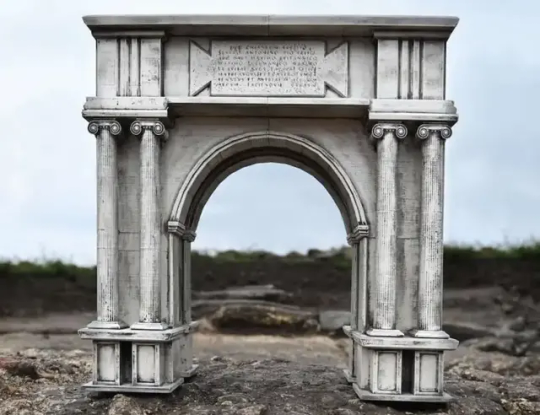
Remains of Ancient Roman Triumphal Arch Unearthed in Serbia
Braving bitter cold and wind, archaeologists in Serbia surveyed the site of an ancient Roman triumphal arch, one of only a handful in the Balkans, that dates back to the third century.
The triumphal arch was discovered in December at the site of Viminacium, a Roman city near the town of Kostolac, 70 kilometers (45 miles) east of Belgrade.
Miomir Korac, the leading archaeologist, said the discovery was made during excavation of the main street of Viminacium, the capital of the Roman province of Moesia.
“This is the first such triumphal arch in this area… It can be dated to the first decades of the third century AD,” Korac told Reuters on Monday.
Viminacium was a sprawling Roman city of 45,000 people with a hippodrome, fortifications, a forum, palace, temples, an amphitheatre, aqueducts, baths and workshops. It existed between the first and sixth centuries.

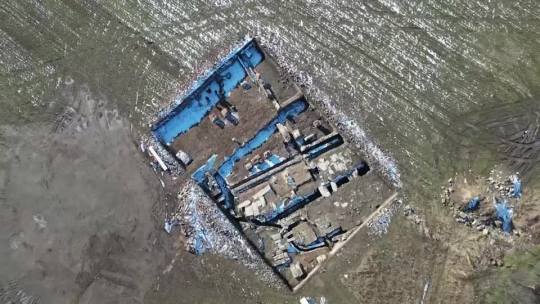



“When we found square foundational footprints made of massive limestone pieces… there was no doubt that this was a triumphal arch,” Korac said.
A fragment of a marble slab with letters reading “CAES/ANTO” suggested that the arch was dedicated to Emperor Marcus Aurelius Antoninus, known as Caracalla, who reigned from 198 to 217 AD.
It is believed that Caracalla was elevated to emperor in Viminacium, said Mladen Jovicic, an archaeologist.
“We are hoping to find more pieces… We have found one finely made pillar, beams, but we would like to find more from the inscription on the arch,” Jovicic said.
Excavations of Viminacium have been going on since 1882, but archaeologists estimate they have only scoured 5% of the site, which they say is 450 hectares — bigger than New York’s Central Park — and unusual in not being buried under a modern city.
Discoveries so far include two Roman ships, golden tiles, coins, jade sculptures, religious items, mosaics, frescos, weapons and remains of three mammoths.


#Remains of Ancient Roman Triumphal Arch Unearthed in Serbia#Viminacium#Emperor Marcus Aurelius Antoninus#Caracalla#ancient city#ancient artifacts#archeology#archeolgst#history#history news#ancient history#ancient culture#ancient civilizations#roman history#roman empire#roman emperor
27 notes
·
View notes
Note
hello, new follower here. i really wanted to tell you about this research paper i have read last year, published in i believe the 70s. the paper is about these finds in kostolac, serbia where they have discovered evidence of a paganistic practice common between the slavs at least in the balkans even today (where im from). you melt metal over the head of someone that has experienced something traumatic and let the metal go solid again in a pot of cold water. the evidence dates back to iron age.
oh, how incredible - it is a very typical (and wonderful) part of Slavic magical thinking: pouring something over, dragging something over, throwing something over - or even... dragging people through something - seems to be the folk answer to many a trouble.
I love the metal version, it is much more... powerful than our typical wax or egg.
11 notes
·
View notes
Video
Milica Gogin & Vladan Simonović - Srećo moja & Momak veseljak * Požareva...
#milica#gogin#goran#vladan#simonovic#vrnjacka#banja#pozarevac#kostolac#2018#sreco#moja#momak#veseljak#narodna#muzika
0 notes
Link
Ovog leta svoje slobodno vreme provedite kvalitetno u Viminacium Avantura letnjem kampu kod Kostolca. Čekamo vas!
0 notes
Video
instagram
Pozarevac Kostolac united (at Klub Borilačkih Sportova "012") https://www.instagram.com/p/CVyTTUEo0SCqbTIp0u0L2PLExzQYj8BJprRIPc0/?utm_medium=tumblr
0 notes
Text
Serbia has been a suitable partner in that effort. Thanks to its critical geography of being a linchpin between Central Europe and the Balkans, a region at the crossroad between Europe and wider Eurasia, the country received a large amount of Chinese resources and attention, as Beijing needs Serbia and the Balkans to connect itself to European markets.
Between 2010 and 2019, China invested 1.6 billion euros ($1.9 billion) in Serbia, while Chinese infrastructure loans to Serbia are estimated to exceed 7 billion euros. The catch is that Serbia perceived the Chinese as a quick and easy source of cash, as Beijing was willing to take over old, debt-ridden industrial facilities that were losing money but still provided employment and livelihood to Serbian working-class families. While the Chinese profit from getting access to resources—for example, in 2020 the bulk of Serbian exports to China has been copper from the Chinese-owned mining complex in Bor, Serbia—the main goal of the Chinese government is to sell the surplus of its coal-related technology and relocate coal-related labor forces abroad.
In 2016, after a landmark visit by Chinese President Xi Jinping to Serbia, China’s Hesteel took over a troubled steel mill in the Serbian city of Smederevo, at one point owned by U.S. Steel. In 2018, China’s Zijin Mining took a 63 percent share in the Bor mine, the country’s only copper mining complex, which was burdened by debt. The fact that the Chinese companies did not adhere to the stringent European environmental standards—which are difficult to follow in the underdeveloped Serbian economy—played a role.
After the European Bank for Reconstruction and Development turned down financing construction of the coal-powered plant Kolubara B in 2014, China took over the project. As part of a 2010 agreement, Beijing is also behind the modernization project of the Kostolac coal power plant, augmenting Serbian dependency on coal.
However, the consequences are now being felt by Serbian citizens. The inhabitants of Smederevo and the nearby village of Radinac, where the steel plant is located, have protested air and soil pollution caused by the Hesteel-owned steel mill. Red dust raining down is not an unusual occurrence in Smederevo. In September 2020, the city of Bor filed a criminal complaint against Zijin Mining for pollution caused by copper mining.
The Serbian Environmental Protection Agency noted in 2019 that in cities like Smederevo, air pollution is above the EU standard for around 120 days of the year. Serbia has the highest rate of pollution-related deaths in Europe and ranks ninth in the world. The European Parliament has also expressed concern about Chinese economic projects in Serbia, including on environmental grounds, adding another obstacle in Serbia’s path toward EU membership.
0 notes